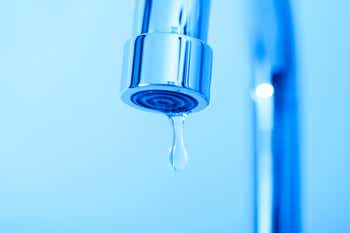Droughts pose more danger than just water shortages - they can lead to prime wild fire conditions, as well as severe flooding when it finally does rain. Texas and Oklahoma are two examples of what can happen when a prolonged drought ends with record breaking rain – severe flooding throughout both states. Parts of the U.S., the West in particular with California, Nevada, Oregon, Utah and Arizona, continue to experience extreme droughts.
California, specifically, is in the midst of one of the most serious droughts on record, even more severe than the drought in Texas and Oklahoma. Ninety-three percent of the state is engulfed in a severe drought with 44 percent of that area in an exceptional drought, the worst type possible.
California has already implemented extreme water conservation measures. Governor Brown declared a drought State of Emergency in January 2014 and directed state officials to take all necessary actions to prepare for a water shortage.
Some parts of the state are considering raising water costs and charging homeowners if they do not cut back on water use. So, conserving water will not only help the drought from worsening, but may also save Californians money on their water bill. In order to help with preventative measures, Californians are asked to take any steps they can to conserve water.
Here are eight water saving tips you can use to help conserve water and maybe save some money, too.
- Use your dishwasher. In most cases, filling up a dishwasher completely uses less water than washing these dishes by hand. Dishwashers built before 1994 waste more than 10 gallons of water per cycle. It’s best to purchase a new model because most of them have features that save energy and increase water efficiency.[1]
- Replace your washing machine. The best way to save water with your washer is by replacing an older, less efficient model, with a high-efficiency washer. Washers built before 2003 are significantly less water efficient and can use up to 23 gallons of water per load, while a modern high efficiency Energy Star models will use only 13 gallons of water per wash. Additionally, pretreat stained clothes to avoid rewashing, make sure every load is full, and wash clothes in cold water when possible to save water and reduce energy bills.
- Check your water heater. If you have an older water heater there is a possibility it could be losing heat quickly and is a water waster. This means it will take longer for the water to heat up, which leads to more water running down the drain while you wait. A quick fix is to try insulating your water heater. If you are able to upgrade to a new model, it is generally worth the cost. An older, more conventional water heater system has cold water in the pipes between the heater and the point-of-use (the shower or faucet). The cold water is dumped down the drain while hot water travels from the heater. Many homeowners are upgrading to a demand recirculating system, which recirculates cooled water that is in the pipes, to the water heater through the cold water line. This saves a large amount of water. The process is like running the faucet water until it warms, but instead of letting that water go down the drain, it’s returned back to the water heater.
- Change your showerhead and faucets. A quick way to save water and money is to change your showerhead to a low-flow stream. (The same can be done with faucets.) You can also reduce water use by turning off the faucet while brushing your teeth and cutting down your shower time.
- Recycle used water and kitchen waste. Keep a bucket in the shower to collect extra water and reuse it to water plants. You can also collect kitchen waste in a container to create your own compost, which helps nourish your plants and, by not running leftover food through the garbage disposal, you also save water.
- Replace your toilet. If your toilet was made before 1993, it uses 3.5 gallons per flush. Replace it with a newer model, which uses less than half that at the now mandated 1.6 gallons per flush and might also qualify you for a rebate from your water utility company. Some states offer rebates for purchasing a high-efficient toilet.
- Alter your landscape. Many homeowners are proud of their beautiful green lawn, but there are different landscapes that can be equally attractive that use significantly less water. Try landscaping with water-wise plants, which are adapted to local conditions and tend to require less water. Reduce the size of grassy areas by replacing it with gravel terrain or synthetic grass. California, for example, is offering a rebate for lawn removal and a number of companies offer free lawn removals.
- Washing your car. Washing your car is now being seen as a waste of water and California, Washington and New York will issue fines if you wash a car or boat on a driveway without a water control nozzle on the hose. There is a growing market of ecofriendly and water conscious alternatives. One is a waterless car wash, which is spray-on liquid made up of wetting agents, lubricants and protectants that soften and emulsify surface grime. Other alternatives are water conscious car washes, which recycle water and typically use biodegradable soap to wash the car.
These are just a few changes that homeowners can make around the house to use less water.
Once you decide on what changes you are going to make to your house, figure out if you’ll require professional help. If you hire a landscaper or plumber and have people working on your property, make sure they are licensed and bonded, and that your homeowners insurance will cover any damages or accidents that might occur during construction.
Taking preventative measures, big or small, will make a positive impact on our environment. Be sure to let your agent know about any updates in the event Updated or new appliances should be noted on your homeowner’s policy in order to make sure they are also covered in your policy.


